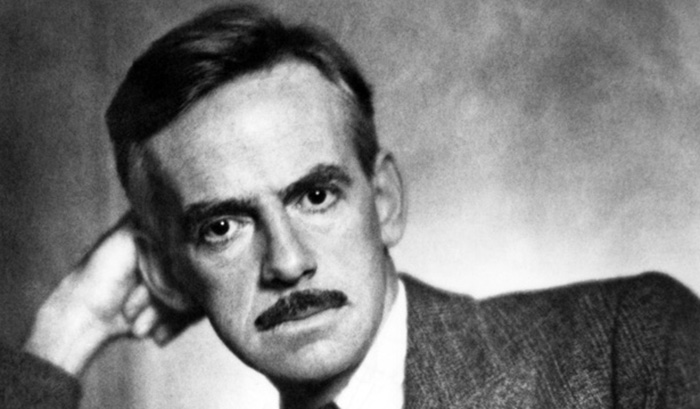A review of The Nine Pillars of History: An Anthropological Review of History, Five Religions, Sexuality and Modern Economics, All as a Guide for Peace.
[img]1342|left|||no_popup[/img]Dr. Gunnar Sevelius’s effort with his book, The Nine Pillars of History, falls within the tradition of thinkers putting their ideas on paper in the hope of changing world paradigms. An ambitious hope, certainly, but a laudable one in an era increasingly dominated by technology-mediated rhetoric and hyperdata, the hyper-real information-neutralizing glut of data. Much like Buckminster Fuller and others, we need intellectuals willing to engage the broader philosophical and practical underpinnings of our social dysfunctions. Unfortunately, Dr. Sevelius’s ostensibly anthropological effort is diluted by methodological confusion that strands him in circular reasoning.
In his study of major world civilizations, beginning with pre-historical hunter-gatherer societies, he simultaneously attempts to extract those factors (“pillars,” in his parlance) that led to varying degrees of social success while using these same pillars to evaluate the success of each civilization/society he studies. A discussion of physiology, including an overview of mitochondrial DNA, attempts to circumvent this circularity by grounding the pillars in biology, but meanders into the nature of survival for any living specie. Only the postulation of the tarp as vital invention in the human process offers a novel aside. In a more rigorous project, this would be enough to leave the pillars without a leg to stand on, even when layered with an analytical contrast between democratic and totalitarian (or “Sumerian,” to use the doctor’s preferred label) modes of governance. But Dr. Sevelius’s essential idea, that successful societies share certain characteristics, remains intact despite the structural flaw in his approach – if only because of common sense. Similarly common is the sensible but well-worn notion that the failure of any given society to address fundamental “pillar” needs will inevitably stir up unrest and, if left unchecked, warfare. For a book that aims to present the causes of war and provide, as remedy, a guide for peace, this is regrettably not nearly enough of an insight to shake the warmongers loose from the engines of war, let alone inspire peace activists.
Curiously, there is no mention in the book of Dr. Abraham Maslow, the pioneer of people towards self-actualization following the fulfillment of a hierarchy of needs. The pyramid-shaped hierarchy begins with physiological needs (health, food, sex, etc.) at the base, and self-actualization needs such as creativity, morality and an acceptance of reality at the apex, with needs for safety, belonging, and esteem in between. Although different individuals might not progress through the hierarchy in quite the same way, the implication is nevertheless clear that without physical security individuals do not have a tendency to develop those faculties of morality, art, and culture that form the basis of lasting civilizations. From this psychological perspective, we can credibly extrapolate a social model in which civilizations that best provide a context for individuals to fulfill their needs are the civilizations that ultimately thrive. As a framework that accomplishes the same as the Nine Pillars, it’s far more robust and developed than the common sense rationale Dr. Sevelius offers in his book.
Further hindering the doctor’s efforts is the inescapable loss of accuracy and nuance that comes with summarizing vast quantities of information, often with an overreliance on other sources. His discussion of economics, for example, closely echoes historian Niall Furguson’s book The Ascent of Money. While an excellent book and valuable to anyone interested in understanding our economy, Dr. Sevelius’s uncritical invocation of Furguson brings into his discussion a highly debatable slant towards Milton Friedman’s theories.
Even when not serving up someone’s else ideas, the doctor’s efforts to condense history into a finite number of pages, with the aim of focusing on the pertinent facts, is diminished by unsupported statements and disorganized reasoning. Of the former, some are relatively harmless in terms of his project, since his overall thesis does not depend on the reader’s agreement or disagreement. For example, he writes within the context of an overview of humanity’s early evolution and historical distribution around the world:
The personal identification based on genes makes nonsense of racial and national classifications. Professor Sykes suggests a first name, a surname, and a “matriname” based on the individual gene-pattern as a specific, personal ID. Using this system for the routine issuing of international passports would be useful in tracking international terrorists, drug dealers, and repeat law offenders. It would be more specific than fingerprints. Done as a routine procedure it would not interfere with privacy conflicts; only persons with bad intentions would have reason to refuse. (p. 4)
Surely a governmental or corporate database of genetic identities could also be used to track dissidents, political activists, and others who oppose the governing regime. Done as a routine procedure, it would be tantamount to numbering people, placing them by definition within a system of surveillance and control. The canard that only people with something to hide would object to surveillance and monitoring has been an excuse used even by so-called democratic governments to extend their own power. That jack boot Orwell referred to in 1984? It has laces made from surveillance and identification. Of course, all this is irrelevant except as a demonstration of Dr. Sevelius’s tendency to take his own views for granted.
This tendency becomes troublesome when, in the effort of keeping his summary brief, he sacrifices precision in favor of convenience. For example:
The Indian states in the Americas were all of the Sumerian type with a king ruling from an anointed position and supported by the religious administration. They all collapsed like a house of cards when the Spaniards arrived with guns. (p. 62)
Although one can assume from the context that he is referring to the South American empires – the Aztecs, the Incas, and so on – his literal lack of precision sweeps up the Native American cultures of North America, which were most certainly not of the “Sumerian” type, in a statement that requires further clarification and nuance but receives none.
The imprecision is further amplified by Dr. Sevelius’s often slushy presentation. In reviewing gender and sexuality within the context of the Nine Pillars, for example, he writes:
The Buddhism moral message is non-political and is independent from royal or central secular powers. It spread easily all over East Asia. In modern times Buddhism was eradicated from China when the Chinese Community Party took over the central power. Just as in the former Soviet Union, the communist dogma did not allow a parallel religious dogma to compete. (p. 280)
Naturally, the consequences for expurgating Buddhism were detrimental, particularly to women who have achieved parity with men with the Buddha’s feminist-friendly teachings. However, considering that China was never the bastion of enlightened Buddhist governance with equal respect for men and women, the extent to which his implied point that Communism’s displacement of women proved uniquely harmful remains very much in question. Regardless, the issue isn’t so much the muddle that emerges by shifting from a positive description of Buddhism to a negative description of its absence, almost like switching topics in mid-paragraph, but the muddle that emerges from mushing together multiple arguments. His treatment of religion is particularly susceptible to this. Consider the following passage in regards to religion, the 7th pillar:
Faith in the USA flowers like nowhere else in the world by being free and not taxed at all. Nobody in the US is forced to attend church or give a collection to the church, and the church is not receiving any support from the common tax base. On weekends the churches (generic for any religious assembly) in the U.S. are filled several times a day. Such voluntary high attendance happens in no other country in the world. The voluntary attendance in U.S. churches of all different denominations proves a religious and moral belief is a fundamental need, indeed the “Seven Historical Pillar.” (p. 318)
Setting aside the fact that the US does indeed commingle religion, politics and tax dollars – the topic deserves considerably more attention than this review can give – voluntary attendance to church proves no such fundamental need for religion, and to offer as evidence a generalization from a single country consists of statistical abuse. While a Gallup poll conducted in 2001 shows 41 percent church attendance in the U.S., compared to 15 percent attendance in France and 10 percent in the U.K., consider the flip side: 59 percent of Americans do not attend church. By extension, if this voluntary high attendance happens, as the doctor claims, in no other country in the world, then it is hardly persuasive to claim religion as a fundamental need.
Once again, a lack of terminological clarity on the doctor’s part confuses the discussion. Certainly, societies require a moral framework in which to ensure social cohesion that is peaceful and sustainable rather than self-destructive. As philosophers will point out, however, it isn’t necessary for morality to be religious in order to be an effective guide for behavior. Dr. Sevelius doesn’t pay much attention to the distinction, just as he neglects the fact that people do not always behave consistently with the dictates of their moral ideologies. The discussion in that regards amounts, rather obviously, to condemning dogmatism.
In any case, what makes the United States notable is its commitment to freedom of religion – and freedom from religion, although Dr. Sevelius doesn’t account for secular humanism in his analysis – not the fact that Americans are religious. Taking a historical perspective, one cannot deny that religion, in one form or another, has been a dominant cultural force in societies throughout history. Yet it doesn’t follow that religion should be a dominant force, a pillar need. Nor is it reasonable to simply lump all religions together as equally beneficial to humanity. Interestingly, the doctor flirts with comparative religious studies when he subjects the world’s major religions – Judaism, Christianity, Buddhism and Islam – to the Nine Pillars, which are:
1. food, water, and energy
2. shelter
3. cleanliness
4. art
5. communication
6. community support
7. religion
8. access to medical help
9. trade
However, instead of delving into doctrinal differences with the aim to highlight how ideology sets the foundation for social organization – and perhaps risk suggesting one religion, or an absence of religion, as superior to the others – Dr. Sevelius remains on the surface with the assumption that religion assumes responsibilities normally associated with particularly socio-political and economic theories and practices. The overlap is worth sketching out. But as it is in the book, asking whether, for example, Christianity improved cleanliness or Judaism facilitated trade, is neither persuasive nor fruitful as line of inquiry. The same applies to most of the book’s discussions.
If we were to reduce the book to a nutshell then, it would be as advocate for that old bumper sticker, the Golden Rule. As Dr. Sevelius points out, the principle of loving one’s fellow human as oneself is common across religions and cultures. Yet as noble as the idea is, the book’s most problematic shortcoming is a focus on the wrong problem, which isn’t one of ideals or philosophy, or even one of identifying the nature of the problem – we already know, before even reading the book, that dogmatism and bad politics lead to conflict – but of conceiving and implementing practical solutions that work. In this, alas, Dr. Sevelius’s well-intentioned but weakly reasoned book offers no guidance.
For more information about The Nine Pillars of History, visit Dr. Gunnar Sevelius at his website: http://web.me.com/gsevelius/Site/Home.html
————————–
web: www.thefrontpageonline.com
eMail: fsisa@thefrontpageonline.com
blog: www.inkandashes.net
…and also fashion with TFPO's The Fashionoclast at www.fashionoclast.com







